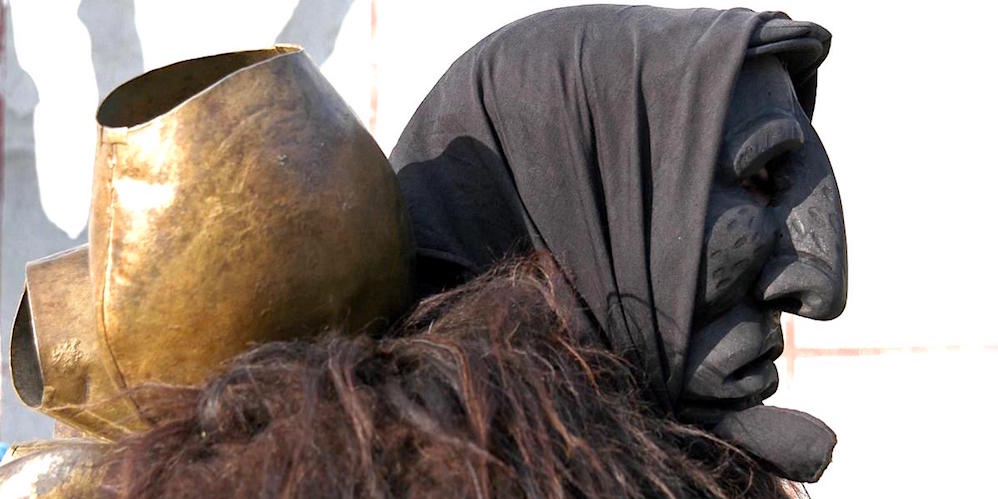From man to beast
Even a candidate as stubborn as winter himself must get cold feet at the sight of a Mamuthone (header image) – not to speak of an entranced hoard of them foot-stamping and cow-bell-rattling on streets around the many bonfires lit for the grave occasion. The noise is deafening and the atmosphere perturbing. The aim of this ancestral rite is to scare winter and evil spirits away with all the might one can muster. Thus, room is made for spring and to welcome the good it promises to bring. In order for nature not to oversleep, the tradition of stamping and rattling, by employing full weight of body and bells, is a forceful means of reliably shaking her out of hibernation and to remind her: Now is the time for renewal! Measures that seem to have worked over the ages.




